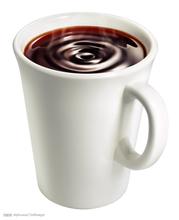Treatment methods of coffee beans
1.2 washing method
Water washing is the most popular treatment method at present, and most boutique coffee beans will choose water washing method. Washing coffee refining process: harvest → storage tank (removal of impurities and immature beans) → pulp removal machine (removal of pulp and impurities) → fermentation tank (removal of mucous membrane attached to endocarp) → washing pool (selection of light and hard beans) → sun drying field (or dryer) → sheller (removal of endocarp) → grading (electronic bean selector or hand selection, sieve, etc.) → outlet.
. Washing drying field
The appearance of coffee beans processed by washing is neat, and the impurities and defective beans are less, and the water content of coffee beans is generally about 16%. The advantage is that it has less miscellaneous flavor, clear taste and bright sour taste; the biggest disadvantage is that coffee beans are easy to get sour and astringent taste during fermentation, and a fermented bean will spoil 50 grams of beans.
5 Yega Xuefen G2 / water washing method
1.3 semi-washing method
Semi-washing, also known as "honey treatment", is a compromise between drying and washing, eliminating the need to ferment coffee fruits. Harvest → storage tank (remove impurities and immature beans) → pulp removal machine (remove pulp and impurities) → washing pool (select light and hard beans) → sun field (or dryer) → sheller (removal of endocarp) → classification (electronic bean selector or hand selection, sieve, etc.) → outlet.
Coffee fruit after taking off the pulp
The quality of honey treatment is more stable than that of drying treatment, but not as good as that of washing treatment. This method of processing coffee beans by honey treatment has recently been sought after by coffee lovers. It has a sweet taste and is rich in Crema. It is suitable for extracting Espresso from the base of Italian coffee. The advantage is that it can restore the flavor of coffee beans, the coffee is more sweet, and the taste of red wine is outstanding. The disadvantage is that coffee beans are very vulnerable to pollution and mildew during the drying process after the exocarp of coffee berries are removed.

Important Notice :
前街咖啡 FrontStreet Coffee has moved to new addredd:
FrontStreet Coffee Address: 315,Donghua East Road,GuangZhou
Tel:020 38364473
- Prev

How do Bolivian coffee beans taste? how to pick coffee?
Bolivia S.H.G Karanawi | Bolivia S.H.G Caranavi Bolivia Karanawi has a bright sour taste like lemon and citrus aromas, as well as a hint of chocolate. Bolivian Karanawi coffee has a refreshing and pleasant sour taste, but its sour taste is not particularly prominent and blends well with other flavors. It is characterized by the fact that after drinking
- Next

An introduction to the cultural history of the origin of mocha coffee beans
Mocha beans are smaller and rounder than most coffee beans, which makes mocha beans look like peas. In fact, bean-shaped berry coffee beans (Peaberrybean) are sometimes called mocha beans. The shape of mocha coffee beans is similar to that of Ethiopia's Harrar coffee beans.
Related
- Does Rose Summer choose Blue, Green or Red? Detailed explanation of Rose Summer Coffee plots and Classification in Panamanian Jade Manor
- What is the difference between the origin, producing area, processing plant, cooperative and manor of coffee beans?
- How fine does the espresso powder fit? how to grind the espresso?
- Sca coffee roasting degree color card coffee roasting degree 8 roasting color values what do you mean?
- The practice of lattes: how to make lattes at home
- Introduction to Indonesian Fine Coffee beans-- Java Coffee producing area of Indonesian Arabica Coffee
- How much will the flavor of light and medium roasted rose summer be expressed? What baking level is rose summer suitable for?
- Introduction to the characteristics of washing, sun-drying or wet-planing coffee commonly used in Mantenin, Indonesia
- Price characteristics of Arabica Coffee Bean Starbucks introduction to Manning Coffee Bean Taste producing area Variety Manor
- What is the authentic Yega flavor? What are the flavor characteristics of the really excellent Yejasuffi coffee beans?

